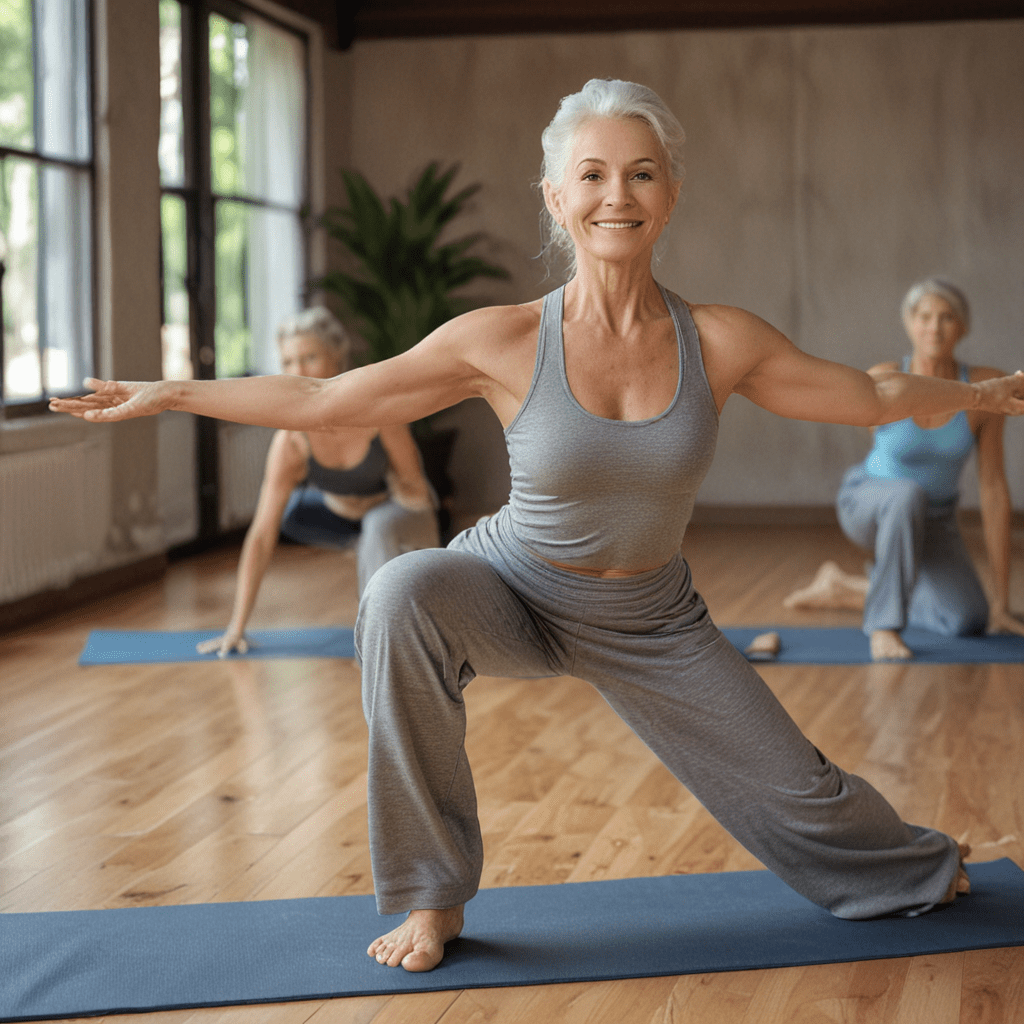
Senior Fitness Retreats with Yoga: Balance and Flexibility
1. Introduction: The Importance of Balance and Flexibility for Seniors
Maintaining balance and flexibility is crucial for seniors' overall health and well-being. Balance helps prevent falls, a significant concern among older adults, while flexibility enhances mobility and reduces the risk of injuries. Yoga, an ancient practice that combines physical poses, breathing exercises, and meditation, has emerged as an effective means of improving balance and flexibility for individuals of all ages, including seniors.
2. Benefits of Yoga for Senior Fitness
Yoga offers numerous benefits for senior fitness, including:
Improved balance and stability: Yoga poses challenge and improve the body's sense of balance and proprioception, which helps prevent falls.
Increased flexibility: Yoga stretches and lengthens muscles, tendons, and ligaments, increasing overall flexibility and range of motion.
Reduced pain and stiffness: Yoga can help alleviate pain and stiffness caused by arthritis, osteoporosis, and other age-related conditions.
Improved sleep: Yoga promotes relaxation and stress reduction, which can contribute to better sleep quality in seniors.
Enhanced cognitive function: Some yoga poses stimulate the brain and improve cognitive function, such as memory and attention.
3. Choosing a Senior Fitness Retreat with Yoga
When choosing a senior fitness retreat with yoga, consider the following factors:
Expertise of instructors: Ensure the retreat leaders are certified yoga instructors with experience teaching seniors.
Class size and environment: Opt for retreats with small class sizes to allow for personalized attention and modifications.
Variety of yoga styles: Look for retreats that offer a range of yoga styles tailored to different fitness levels and abilities.
Inclusions: Check if the retreat includes meals, accommodations, and access to other wellness activities, such as meditation or hiking.
Location and duration: Consider the retreat's location and duration to suit your preferences and schedule.
6. Safety Considerations for Senior Yoga Participants
While yoga is generally safe for seniors, certain precautions should be taken:
Consult a healthcare professional: Consult your doctor before starting a yoga practice to ensure it is appropriate for your health condition.
Start gradually: Begin with gentle poses and gradually increase intensity and duration as you progress.
Listen to your body: Pay attention to any pain or discomfort and stop the pose if necessary.
Use props: Use blocks, blankets, or straps for support and modifications as needed.
Hydrate well: Stay hydrated by drinking plenty of water before, during, and after yoga sessions.
7. Sample Yoga Poses for Senior Fitness
Here are some beginner-friendly yoga poses for seniors:
Chair pose: Sit in a chair with feet flat on the floor, knees aligned with toes. Extend your arms overhead and inhale as you reach up, exhale as you bend your knees.
Tree pose: Stand with your feet hip-width apart. Lift your right knee and place the sole of your right foot on the inside of your left thigh, just above the knee. Extend your arms overhead.
Cat-cow pose: Start on your hands and knees, with your hands shoulder-width apart and your knees hip-width apart. Inhale as you arch your back and look up, exhale as you round your back and tuck your chin to your chest.
Bridge pose: Lie on your back with your knees bent and feet flat on the floor. Press your feet into the floor and lift your hips towards the ceiling.
Child's pose: Kneel on the floor with your knees hip-width apart and your toes pointed. Sit back on your heels and fold forward, resting your forehead on the floor.
8. Incorporating Yoga into a Senior Exercise Routine
Frequency: Aim for 2-3 yoga sessions per week.
Duration: Start with 20-30 minute sessions and gradually increase duration as you progress.
Intensity: Choose poses that are appropriate for your fitness level and gradually increase intensity.
Warm-up: Always start with a warm-up to prepare your body for the practice.
Cool-down: End with a cool-down to relax your body and reduce stiffness.
9. Tips for Getting Started with Yoga as a Senior
Find a qualified instructor: Seek a yoga instructor who is experienced in teaching seniors.
Modify poses: Don't hesitate to modify poses to suit your abilities and limitations.
Listen to your body: Rest when needed and don't push yourself beyond your limits.
Be patient: It takes time to develop flexibility and balance.
Enjoy the process: Yoga is a journey, not a destination. Focus on the present moment and enjoy the practice.
10. Conclusion: The Value of Senior Fitness Retreats with Yoga
Senior fitness retreats with yoga offer a comprehensive and enjoyable way for seniors to improve their balance, flexibility, and overall well-being. By incorporating yoga into their exercise routines, seniors can reap numerous physical, mental, and emotional benefits. Whether you are new to yoga or have experience, consider joining a senior fitness retreat to enhance your health and vitality.
FAQ
Is yoga safe for seniors?
Yoga is generally safe for seniors, but it's important to consult with a healthcare professional before starting a yoga practice.
What are the benefits of yoga for seniors?
Yoga offers numerous benefits for seniors, including improved balance, flexibility, reduced pain, enhanced sleep, and cognitive function.
How often should seniors do yoga?
Aim for 2-3 yoga sessions per week, with each session lasting 20-30 minutes.
How can I get started with yoga as a senior?
Find a qualified instructor, modify poses to suit your abilities, listen to your body, be patient, and enjoy the process.
Where can I find senior fitness retreats with yoga?
There are numerous senior fitness retreats with yoga available. Research online or consult with your healthcare provider for recommendations.


